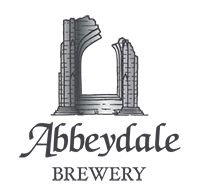Festival of Debate – Cask v Keg

ISSUE
The point of the debate coincides with Now Then magazines Festival of Debate due to take place in the run up to the general election, curated to provoke discussion amongst people. The cask vs keg debate doesn’t take a political stance but is relevant in terms of changes within the industry. One issue that Britain’s beer industry faces is with the significant loss of pubs. Approximately 30 pubs a week are closing their doors, so surely we must acknowledge the importance of adaptation. Shouldn’t we recognize the value of trade whether it be cask ale or craft keg beer, after all, the aim of any business it to survive, support the economy and in doing so create and sustain necessary employment.
The Cask Ale. Formally a barrel shaped stainless steel container. Cask-conditioned beer, is unfiltered, unpasteurized and served without additional nitrogen or C02 pressure. Casks are typically this shape so when sat belly up in a cellar the finings eliminate the yeast and any additional sediment collects in the bottom so the beer runs bright. The additional bulges around the middle of the barrel are for stability and prevents the cask rolling around.
The Keg Beer. Kegs are cylindrical in shape and generally made of stainless steel and stored with an internal pressure. The beer itself is brewery conditioned and is essentially the same product as cask ale but with the addition of gas for that extra fizz or smooth texture.
Real Ale. ‘A natural product brewed using traditional ingredients left to mature in the container from which it is served in the pub through the process of secondary fermentation. This makes real ale unique amongst beers and develops the tastes and aromas that further processed beer cannot provide.’
A combination of passion and anger has lead to an ongoing tedious brawl regarding the long established beer barrel and its slightly varied in shape sister, the keg. The cask vs keg debate has been circulating for around 5 years now, hitting its peak 18 months back. Now publicans and the brewers themselves have been throwing out insults and abuse for years and instead the industry continues a debate based on concept. Surely a trainer is still a shoe, if it’s used for the same purpose of walking and worn on the foot, even if it differs slightly in design? The process of making real ale to put in both cask and keg is the same from the malt right through to the conditioning tank. The only variance being keg beer has CO2 artificially dissolved in it whereas cask beer doesn’t. Eradicate petty argument and at the end of the day all you have is two methods of dispense, admittedly with different traits, but effectively still tapped and believe it or not beer is still drunk from the bar!
POSITION 1
FACT. When a cask is received by the licensees from the brewery it’s an unfinished product, where the quality of what’s served depends on the routine of the cellar, precise care and the publicans commitment standards. Only then does the beer go through the secondary fermentation process. The intensity of flavour and refreshing aromas are released and tastes sharper when served between 11-13 degrees centigrade, where the beer should remain clear.
Fighting the cask corner is CAMRA – Campaign for Real Ale. The biggest consumer group actively campaigning on issues affecting beer drinkers and pub-goers, on the basis of promoting the availability of real ale. The cask ale is a real Great British icon, like the Mini Cooper or a full English fry up. What could illustrate a country better than experiencing a pint of cask ale in a good old pub? But what first brought the KEG to the attention of CAMRA however, was the 1970s onslaught on poor quality beer like Watneys Red Barrel, consequently giving kegged beer a bad name. You could say CAMRA was created in response to the bad keg beers around and it’s still apparent in their attitudes towards keg beer in present day. Modern day kegging is pricier compared with the more traditional means of cask beer on offer so drinkers are still in favour of the cask. I guess CAMRA and the regular drinkers support the cask ale over the keg beer. After all CAMRA and valiant cask ale fanatics shouldn’t be expected to change their habits. The keg, although it’s acknowledged, is against what the campaign stands for and is effectively considered outside the perimeter. However, I’m sure many will say there are few finer things in life better than a carefully made and attentively treated pint of cask ale. What’s more with over 1000 craft breweries in the UK today, there is plenty of choice on offer and the market for cask ale is as appealing and innovative as ever.
POSITION 2
FACT. Craft keg beer is essentially the same product as cask ale but with different carbonation and means of dispense. It is usually served chilled around 6-8 degrees centigrade, slightly cooler than cask ale or even 0-5 degrees centigrade if they are extra cold. Kegs can be stood on end for dispensing with a coupler attached to the single aperture, which then feeds gas into the keg to push the beer towards the bar.
Representing the keg are the breweries themselves, like us at Abbeydale. Like any respectable industry, there’s a lucrative market for beer and it’s ever evolving. As trends come and go, we see the revival of products just like the keg, which have slowly infiltrated over from the US, like Founders. Although craft ale breweries can be close knit at times, we’re still a business and must be competitive in order to survive. Understanding the market and consumer tastes is vital and that’s where the increasingly fashionable keg beer is prominent. Not for a moment are we saying we’re to put the cask on the shelf, metaphorically speaking, nor should we forget there are lager drinkers out there, amongst other demographics, who may prefer something slightly cooler, smoother or fizzier, which is where keg beer is key when approaching a possible set of new customers. Keg beer has a greater longevity than that of the shelf life of the cask, which has a 72-hour window in which to be drunk. Also keg beer has seasonal advantages where a publican can store keg beer for longer say if they have a poor winter and fewer customers and as a result there aren’t ullages and wasted money. The issue in the debate between cask and keg beer lies in the way customers drink with their eyes. They come across a craft keg beer that commonly suffers from chill haze, essentially the result of haze-producing proteins that reside in the beer, and turn their nose up at it without beer even passing their lips. It’s a great shame, because despite first appearances, it can be a tastier alternative to cask ale, with more intense hop character.
The message from Abbeydale is that kegged beer is current and becoming progressively popular. The demand in the pubs is apparent and surely it’s in the breweries best interest to invest in this and continue creating.
SUMMARY
So although some CAMRA branches are choosing not to embrace the infamous keg and perpetuate the disputes surrounding the 1970s failed keg movement, it’s fair to say they’re standing up for their fundamental beliefs. They seem to be in contention with the keg for that reason but ultimately if a beer is poor quality before packaging its bound to be poor quality on the bar, regardless of type of container. Have CAMRA misinterpreted an argument against dispense? It’s a sizeable organization with a dedicated following and a lot of what they say influences the way people drink, which if you ask me is a shame, as it could be detrimental for the days of the keg. As it stands I don’t see the need to worry as cask and keg both hold a respectable place within Britain’s beer industry. Without the breweries CAMRA wouldn’t have anything to campaign for/against in the first place. With that in mind and given the popularity of the organization’s GBBF with its extensive selection of cask ales, I feel it’s about time we see the keg and its product showcased. Other local breweries like Bradfield, Thornbridge, Acorn & Saltaire are all making waves in kegging and it should be celebrated and promoted, not refused and ignored.
Bottom line is the craft keg beer that goes into keg is of similar state to that of ale in casks, at times obtaining differing attributes, but the only difference being gas is added on dispense to create artificial carbonation. Surely the issue remains with preference. The underlying problem doesn’t seem to stand with real ale but instead is apparent with real people. CAMRA don’t have to drink keg beer, but many will sure say they will be missing out and some will say they need to move with the times. The problem being that cask drinkers may be reluctant to drink craft keg beer and the lager drinkers not willing to drink cloudy keg beer. But with such a high percentage of lager being drunk over cask beer in the UK, surely kegging could be the solution to keeping the beer industry alive?




